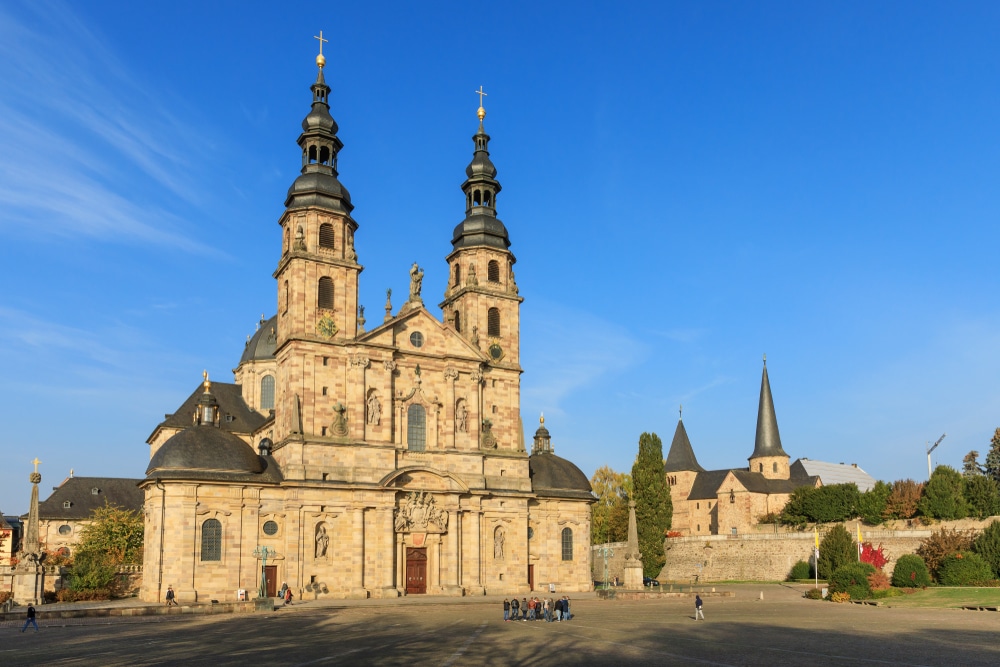St. Michael in Fulda
The church of St. Michael in Fulda, Hesse, is one of the most important sacred buildings in Germany. It dates back to the 9th century.

The Michaelskirche
The Michaelskirche in Fulda is one of the oldest churches in Germany and one of the most beautiful sights of the city in Eastern Hesse. It is located on the Michaelsberg north of the cathedral. Inside the church, visitors can admire fresco paintings from the Middle Ages.
Origin of the building
The church of St. Michael was built between 820 and 822 at the behest of Abbot Egil (around 750-822) in the architectural style of the Carolingians. The Jerusalem Church of the Holy Sepulchre served as a model for the sacred building. The conception of the church was taken over by Rabanus Maurus (780-856), who also succeeded Egil as abbot of Fulda. The church was named after the holy archangel Michael. On January 5, 822, the consecration of St. Michael's Church took place by Bishop Haistulph. From then on, it served as a burial church on the former monks' cemetery.
It is assumed that the original building was a round building with a conical roof. On the east side there was a niche building. There was also a crypt. When the church was largely destroyed by wars between 915 and 937, its reconstruction took place in the 10th and 11th centuries, which included the erection of the west tower. In the 12th century the tower was also provided with a bell storey. The former cemetery chapel rose to become the church of the subsidiary monastery, the provostship of Michaelsberg.
From 1715 to 1716, the Rochus Chapel was built on the northern side of the church. In addition, the interior of the church was baroqued. Between 1935 and 1938, careful restoration work took place.
During the Second World War, the walls of the church of St. Michael were destroyed by bombing. By 1948 the war damage had been repaired.
Furnishings of St. Michael's Church
The tomb of Abbot Egils is still preserved in the eastern part of the ambulatory. Originally, the crypt did not have its own altar or a spatial connection to the upper floor. The rounded upper floor is supported by eight columns, four of which date back to the 9th century. One of them is even said to belong to the founding building of the Carolingian era.
The frescoes
The frescoes in the interior of the church of St. Michael are one of its most interesting features. They are dated to the 11th century. Upon entering St. Michael's Church through a heavy iron door, the visitor is greeted by a warm atmosphere with yellow-orange light. At the east end of the chapel, a preserved painting of the Archangel Michael and other angels can still be seen. It was not until 1936/37 that this painting from the Middle Ages could be uncovered.
The Altar
Around the altar of St. Michael's Church there are eight columns symbolizing the eight Beatitudes. These are the first words that Jesus spoke during the Sermon on the Mount. In doing so, Christ dedicated himself to those who had fallen short in life.
The side chapel of St. Roch
On the north side of the altar, the side chapel of St. Roch can be seen through a round arch. In it is a Baroque altar, ornately carved from wood, with rippled gold decorations. The decorations include St. Roch, who was venerated as the patron saint of plague sufferers.
Opposite the altar is a stone tablet commemorating the Passion of Christ. It dates from the 14th or 15th century.

